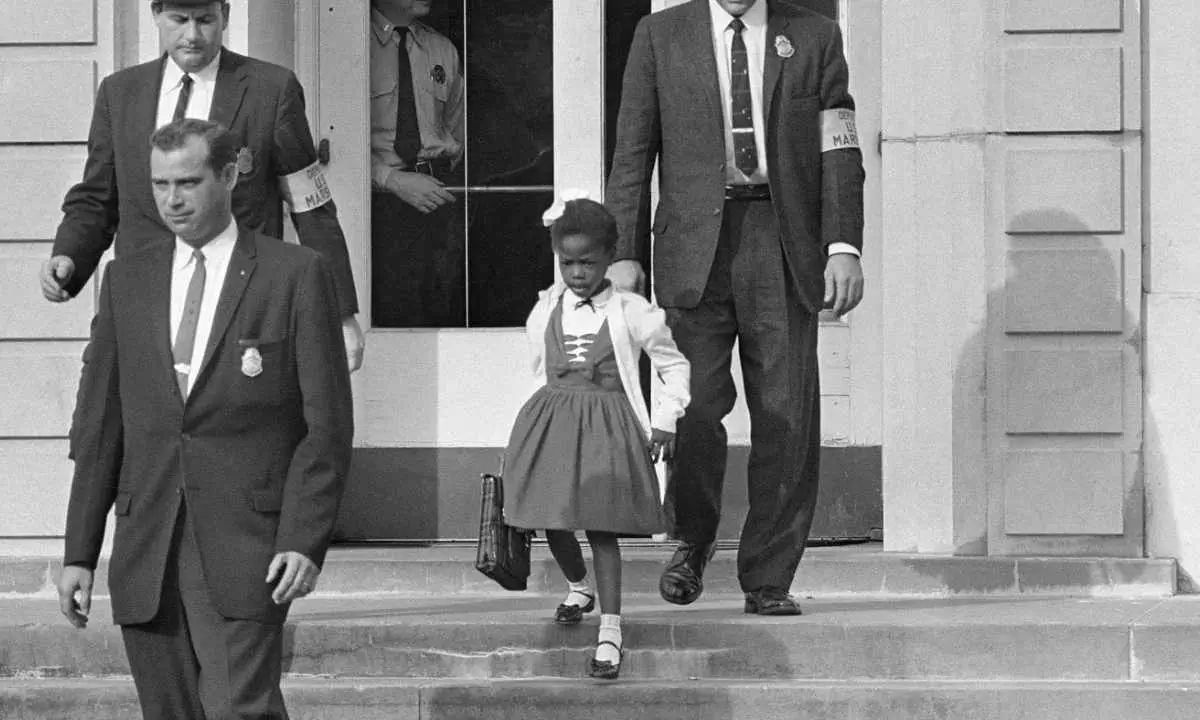First African American Child to Attend an All-White Elementary School: Ruby Bridges!
In November 1960 six years old Ruby Bridges became a symbol of the struggle against segregation. This was when she became the first African American child to attend an all-white elementary school in New Orleans, Louisiana. That was a time in US history when civil rights activists challenged segregation while conservatives were fighting to keep the status quo.
Classroom desegregation was made possible by the landmark 1954 U.S. Supreme Court decision in Brown v. Board of Education. It declared racial segregation in public schools unconstitutional. But as a little girl, Ruby faced unimaginable challenges. Let’s now look at that turbulent day in history and where Ruby is now.
Racial Segregation in the U.S.
The roots of Ruby Bridges’ experience go back to racial segregation in the United States. For decades, Black Americans dealt with systemic discrimination and racial segregation, particularly in the South. The legal foundation for this segregation was solidified by the U.S. Supreme Court’s 1896 decision in Plessy v. Ferguson. It upheld the doctrine of “separate but equal.” Under this doctrine, Black and white people were required to use separate facilities. Including schools, restaurants, and public transportation. However, these separate facilities were rarely equal in quality. African Americans often received far fewer resources and opportunities.
By the mid-20th century, the inequalities of segregation were becoming increasingly untenable. The Civil Rights Movement gained momentum, with activists and legal challenges pushing for an end to racial discrimination. One of the most important legal battles in this regard was Brown v. Board of Education. The case, which was decided by the Supreme Court in 1954, overturned Plessy v. Ferguson by declaring that racial segregation in public schools violated the Equal Protection Clause of the 14th Amendment. The decision stated that “separate educational facilities are inherently unequal” and paved the way for desegregation.
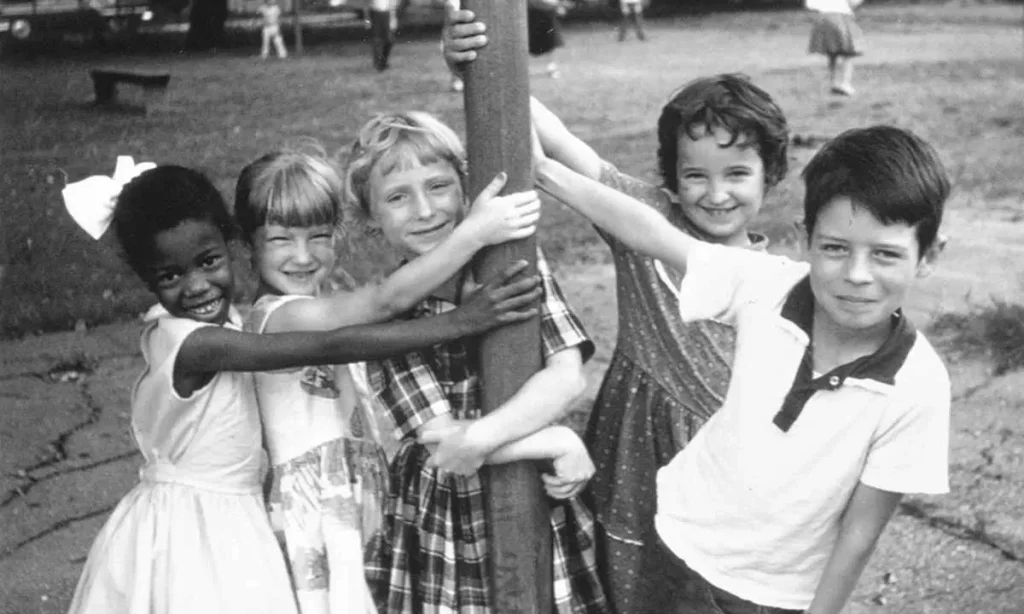
Ruby Bridges and New Orleans
Although Brown v. Board of Education mandated the desegregation of public schools, the process of integration was met with fierce resistance, particularly in the southern states. In New Orleans, the public school system continued to segregate Black and white children for several years following the Brown decision. Federal Court order forced the hand of the Louisiana state government in 1960. Under significant pressure from the federal government, the Orleans Parish School Board administered an entrance exam to students at Bridges’s school to keep black children out of white schools.
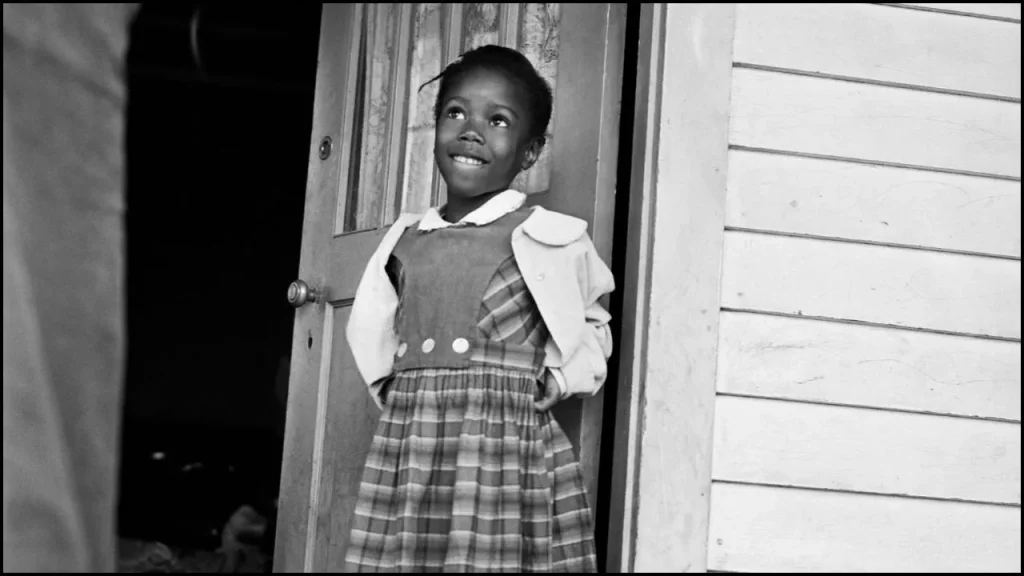
Ruby Bridges was one of six Black children who were selected to integrate into the New Orleans public school system. Ruby’s family was initially reluctant to send her to an all-white school due to concerns for her safety. However, after discussions with representatives from the National Association for the Advancement of Colored People (NAACP), Ruby’s parents agreed that she would attend William Frantz Elementary School, becoming the only Black child at the school.
On November 14, 1960, Ruby Bridges arrived at William Frantz Elementary under the protection of U.S. Marshals, who had been dispatched by President Dwight D. Eisenhower to ensure her safety. The scene outside the school was chaotic, with a large crowd of angry white protesters shouting insults and threats. Some held signs with hateful messages, while others yelled racial slurs. The U.S. Marshals escorted Ruby through the mob and into the school, marking the start of her brave journey.
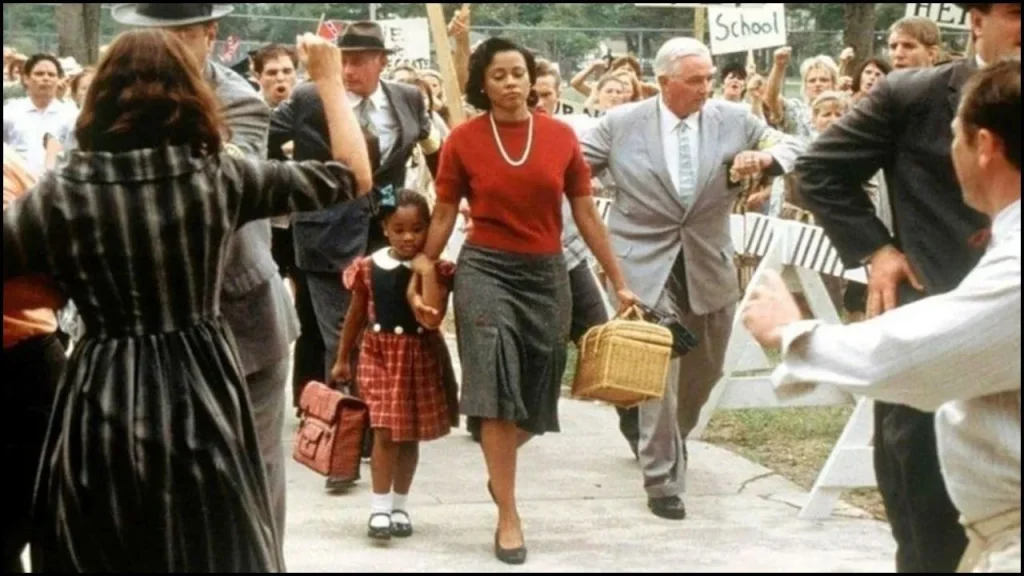
Inside the Classroom: Ruby’s Experience
Inside the school, Ruby faced additional challenges. Many of the white parents withdrew their children from the school in protest, and for an entire year, Ruby was the only child in her first-grade class. Her teacher, Barbara Henry, was one of the few people who treated Ruby with kindness and respect. Henry, a white teacher from Boston, taught Ruby in a classroom where no other students were present. In later interviews, Henry expressed her admiration for Ruby’s resilience, stating, “She was an extraordinary little girl who didn’t let any of the hate get to her. She was focused on learning, and that was her saving grace.

“She was an extraordinary little girl who didn’t let any of the hate get to her. She was focused on learning, and that was her saving grace.”
Barbara Henry – Ruby’s teacher
Despite the hostility, Ruby remained determined to attend school every day. Her mother, Lucille Bridges, later recalled the strength that her daughter showed.
“She didn’t know what was happening, but she knew she had to go to school. That’s all she ever wanted—to learn.”
Lucille Bridges
The U.S. Marshals who escorted Ruby also had their own memories of the event. One of them, Charles Burks, reflected on Ruby’s composure amid the chaos. Some white women even threatened to poison little Bridges. Hence she had to bring cutlery and water also from home.
“She showed a lot of courage. She never cried, she didn’t whimper. She just marched along like a little soldier, and we’re all very proud of her.”
US Marshal Charles Burks
Norman Rockwell’s Famous Painting
The courage of Ruby Bridges made it a canvas. In 1964, American artist Norman Rockwell created a painting titled The Problem We All Live With. It depicts Ruby being escorted by U.S. Marshals on her way to school. In the painting, Ruby is shown from behind, wearing a white dress and carrying her schoolbooks, while the marshals surround her. The racial slurs and thrown objects from the angry mob are shown directly. Rockwell’s painting powerfully captures the tension and bravery of the moment, emphasizing Ruby’s innocence in the face of overwhelming hostility.
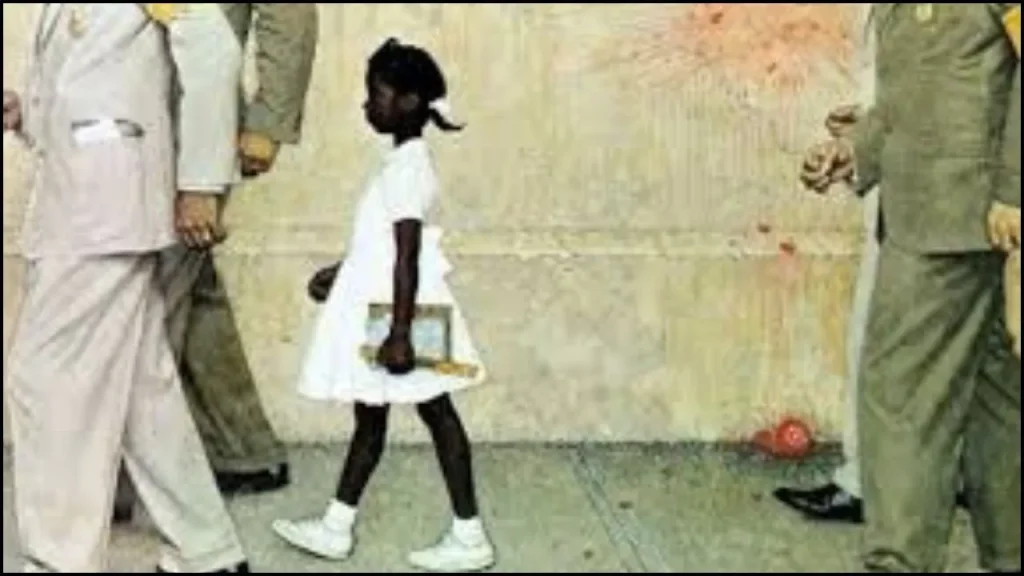
The Problem We All Live With became one of Rockwell’s most iconic works, and it remains a powerful symbol of the Civil Rights Movement. The painting was also displayed in the White House during the presidency of Barack Obama, a testament to the lasting impact of Ruby Bridges’ actions.
The Long Road to Change
The process of school desegregation in the United States was gradual and complex. In 1964, the Civil Rights Act was passed, which included provisions for enforcing desegregation in public schools. Despite this, some schools remained segregated or used various tactics to delay integration. The passage of the Elementary and Secondary Education Act of 1965 further aimed to provide resources for schools serving disadvantaged students, which indirectly supported the desegregation efforts.
By the late 1960s and early 1970s, more schools nationwide began to comply with desegregation orders. The Supreme Court continued to hear cases related to school desegregation, and its decisions helped to clarify the requirements for compliance. The process was particularly slow in some Southern states, where resistance remained strong. It wasn’t until the 1970s and 1980s that significant progress was made, with many schools becoming more fully integrated.
Ruby Bridges’ story inspired future generations to continue the struggle for civil rights. Today, Ruby is a civil rights activist, advocating for equality in education and beyond. She often speaks to young people about her experiences and the importance of standing up for what is right.
“It wasn’t just about me walking through those doors. It was about all of us moving forward together.”
Ruby Bridges
Where Is Ruby Bridges Now?
Ruby Bridges is now 70 years old and continues her efforts as an American civil rights activist. She now lives in New Orleans with her husband and four sons.
In January 2001, Bridges President Bill Clinton awarded the Presidential Citizens Medal to Ruby. In November 2006, Bridges received the honor as a “Hero Against Racism” at the 12th annual Anti-Defamation League “Concert Against Hate.” On March 5, 2024, Bridges was introduced to the National Women’s Hall of Fame alongside renowned tennis player Serena Williams.

Conclusion
Ruby Bridges’ experience as the first African American child to attend an all-white elementary school is a powerful example of individual courage in the face of systemic racism. Her story reflects the broader struggle for racial equality in the United States, particularly in the realm of education. Through her bravery, Ruby helped to break down the barriers of segregation and paved the way for future generations. Today, her legacy continues to inspire those who work toward a more just and equitable society.
Also Read:
The Hollywood Movie Star “Hedy Lamarr” Invented WIFI, Bluetooth, and GPS Technology!
Deepest Dive By A Crewed Vessel to the Mariana Trench | Victor Vescovo’s Million Dollar Mission!

